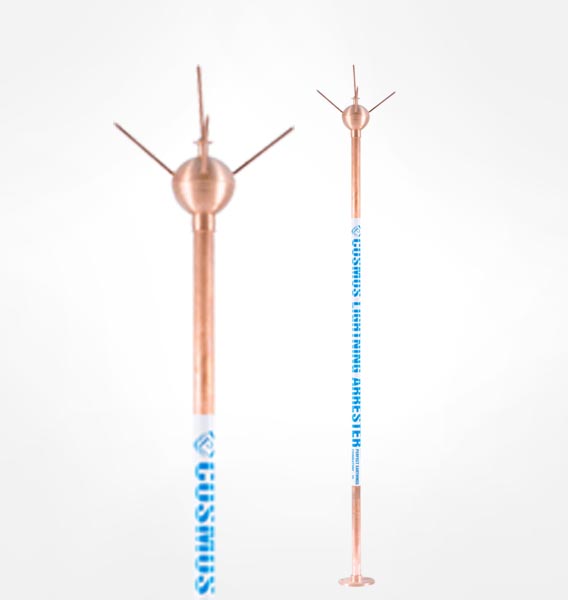Lightning is one of nature's most destructive forces; with discharges exceeding a million watts of power, they can create catastrophe within seconds. The first manifestations of the effects of lightning will be immediate and visible: Such destruction entails damaged buildings, uprooted trees, injured people, and in some instances, fatalities. Lightning has various secondary effects: Consider transient overvoltage, high-voltage surges of very short duration that can damage electronic systems in a building. Hence, it is essential to take into account both direct and indirect effects of lightning while searching for Best lightning protection system in Tamilnadu to provide complete protection to any establishment from lightning damage.
The lightning rod is an important part of a lightning protection system. It gives a controlled point of impact for the discharge, allowing the lightning current to find a safe path to earth without injuring the structure to be protected. A leading lightning protection solution in Tamilnadu, we offer advanced systems and lightning protection instruments in Tamilnadu to give your property and assets maximum safety.
The following elements form an integrated lightning protection system:
The protection provided by Franklin Spikes and Mesh conductors involves distributing and dissipating the lightning discharge currents through a network of down conductors and earthing systems. Installations, sections, and materials must comply with the standards defined by “IS2309,” which outlines the specifications for this type of system. As the best lighting solution provider in Tamilnadu, we ensure that every component of our lighting protection system in Tamilnadu is designed to meet these high standards.
The lightning arrester channelizes the lightning current towards safe earth. An earthing electrode finally does other things: it conducts the lightning current to the ground and distributes it in it. Such provisions, along with equipotential bonding, protect structures from damage by lightning. Apart from this, lightning affects electrical and electronic equipment connected through transmission lines. Surge protection devices are fitted to protect sensitive equipment from these effects. We are the best lightning protection system provider in Tamilnadu and offer good, reliable surge protection devices for electrical systems.
The best lighting protection system provider in Tamilnadu is just what you need. We offer lighting protection solution in Tamilnadu so that your assets are well protected against the ruinous effects of lightning. Our lighting protection system in Tamilnadu includes a complete implementation of Franklin rods, mesh conductors, surge protection devices, and more, thereby giving all kinds of solutions for your needs. We take pride in saying that we are the best lighting solution provider in Tamilnadu in terms of protection systems, providing high-quality lighting protection instruments in Tamilnadu that conform to all of the safety standards and regulations laid down.
Varients
Specification
Material
Conventional
Frankline Spike Method, Tan 45o coverage (radius increases when height increases)
Pure Copper 4ft pipe with 80mm Dia Ball, spike length of 100mm and base plate
